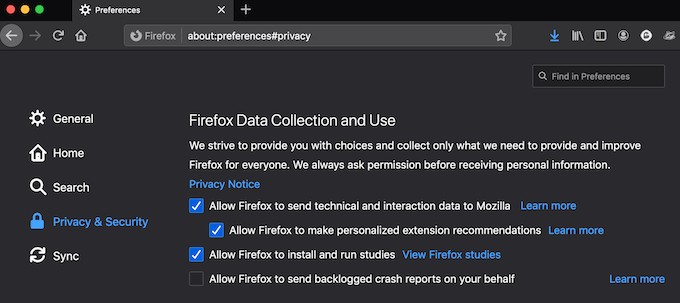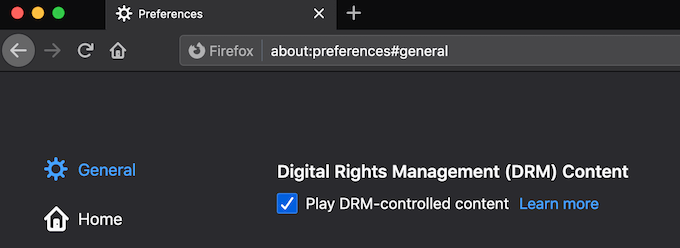Mozilla Firefox is an open source software, which means that any user can access its code. If you know what you’re doing, you can make changes to the existing code, and release a brand new browser. That’s how Waterfox came to be. It is a browser originally based on Mozilla Firefox code.
There are other similar projects based on Firefox, like Pale Moon, and Basilisk. However, Waterfox has gotten the most attention as an independent browser.
What Is Waterfox?
Waterfox is a browser based on Firefox code. The following reasons contributed to the success of Waterfox:
- It was the first 64-bit browser on the web.
- It not only offered better speed, but also gave users freedom and control to run any extensions or add-ons they like, including traditional XUL Firefox extensions and NPAPI plug-ins like Java and Silverlight.
- Waterfox promised that no data or telemetry would be sent to Mozilla or the Waterfox project, and ensured enhanced privacy and security.
Waterfox is compatible with Windows, Mac OS, and Linux operating systems. There’s also an Android version available to download for free in the Google Play Store if your smartphone or tablet runs 64-bit Android.
Firefox vs Waterfox: Which One Is Safer to Use?
When Firefox Quantum and Firefox 57 were released, many users weren’t happy with the transformations even though it was much faster than its predecessor because they dropped the traditional Firefox extensions and interface everyone knew. In that regard, Waterfox seemed like a better alternative as it could match Quantum’s speed and also keep the add-ons.
However, since Mozilla released Firefox Extended Support Release or Firefox ESR, there aren’t too many differences between Firefox ESR and Waterfox. In fact, Waterfox feels like Firefox ESR with a few settings changed.
Let’s look at how the telemetry function works in both browsers. Firefox collects this data and sends it to the developer (Mozilla) to improve the browser. You can read exactly the type of information that is captured here. If you consider that a violation of your privacy, Waterfox might appeal to you since it’s free of telemetry. However, in Firefox ESR you can easily disable this function and stop your data from being sent to Mozilla.
The biggest issue with the Waterfox browser is the slow security updates. Since Waterfox is based on Firefox ESR, the Waterfox developers have to wait for Mozilla to release the security updates and then work on integrating them into Waterfox.
This may take them anywhere from a couple of days to a few weeks after the security patches have been released for Firefox ESR users. This may leave your computer vulnerable to all sorts of attacks.
How to Implement Waterfox Features in Firefox
If you find certain Waterfox features appealing, you can tweak the Firefox browser settings to get the privacy features of Waterfox and enjoy the best of both browsers.
Remove Pocket from Firefox
Waterfox disables Pocket by default, while Firefox (especially Firefox Quantum) has Pocket deeply integrated within the browser’s working processes. The good news is that you can remove Pocket from Firefox with just a few clicks.
Open Firefox and start a search. Hover over the Pocket icon in the search bar, right-click it, and select Remove from Address bar. This gets rid of Pocket.
Stop Sending Telemetry Data to Mozilla
If you don’t like the idea of telemetry data being sent to the developer, you can disable that function also.
To do that, follow the path Options (Windows) or Preferences (Mac) > Privacy & Security > Firefox Data Collection and Use and edit the preferences for sharing telemetry data with Mozilla.
Disable DRM-controlled Content
Digital Rights Management or DRM is technology that allows online video and audio services, like Netflix, to enforce their own requirements when the content they provide is being played. Waterfox has the DRM feature disabled by default. This will, however, prevent you from watching DRM protected content from sites like Netflix.
To disable DRM-controlled content, go to Options (Windows) or Preferences (Mac), then scroll down until you see Digital Rights Management (DRM) content. Deselect Play DRM-controlled content to disable it.
Which Browser Should You Choose?
We recommend using Firefox because it receives security updates on release. If you have used both browsers you will realize that the advantages that Waterfox initially had over Firefox no longer apply.
Share your thoughts on whether you prefer Firefox vs. Waterfox in the comments section below.
Related Posts
- How to Fix the “err_internet_disconnected” Error
- How to Fix the “pr_end_of_file_error” Error in Firefox
- How to Fix “Your In-Browser Storage for Mega is Full” Error
- How to Fix “The Requested URL Was Rejected. Please Consult With Your Administrator” Browser Error
- How to Fix the “ERR_CONNECTION_RESET” Error (10 Methods)






